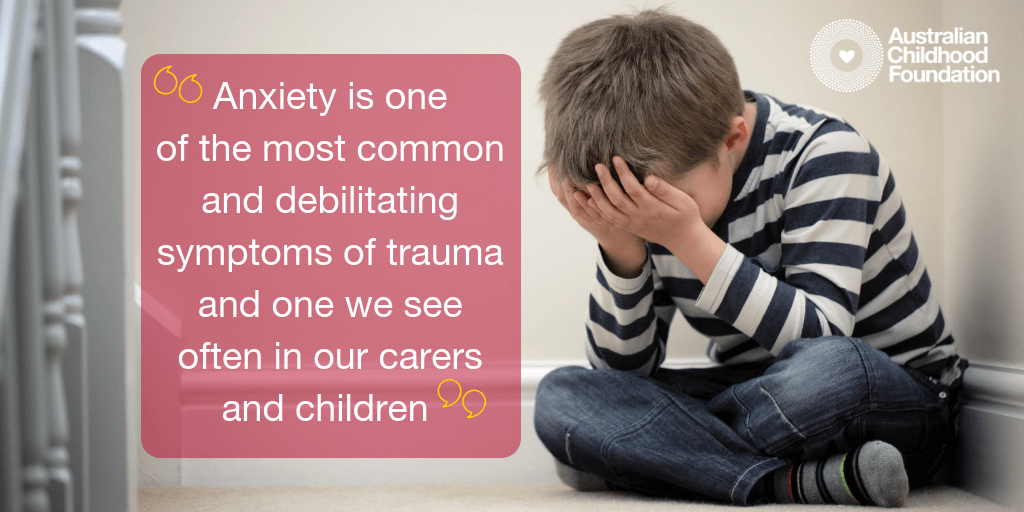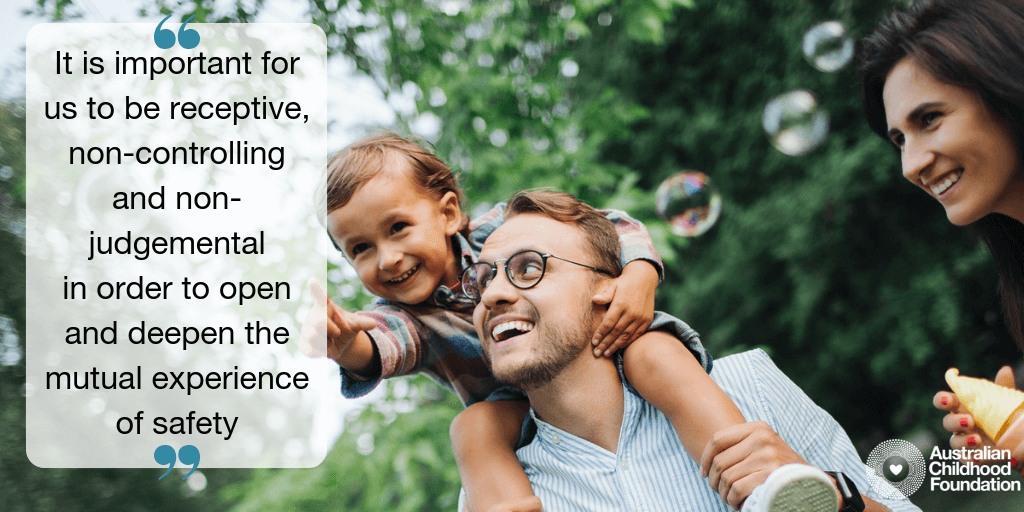
Looking in the Mirror
This blog has been written by Anna Fasolo,
who is a Therapeutic Specialist at the
Australian Childhood Foundation.
Relationships are essential for all work with children and young people, even more so when they have experienced the traumas of abuse and violence. At the Foundation, our therapeutic model reflects this; we understand that relationships are the site of the trauma and must also be the site of repair. It is in safe relationships that healing can begin to occur.
This importance of relationships is underscored not just by conventional wisdom (we know we feel better about ourselves and others when we have supportive relational contexts) but is also underpinned by neurobiology. Our own experience of safety and of regulation is impacted by the neurobiology and regulation of those with whom we are in a relationship. This is what Schore has described as ‘interactive psycho-biological regulation’ (Schore, 2000).
Children are a mirror of our own self.
When working in the foster care system I have found this metaphor a valuable one to explore the ways in which a child in care holds up a mirror to their foster carer, shining a light in the places that are often painful and uncomfortable to go to for the adults caring for the child. Since the mirror process is reflective, it is also important to acknowledge the secondary trauma that can occur in caring for a hurt child, as the parent mirrors the child’s distress and then the child, in turn, mirrors it back.
As Therapeutic Specialists, the neuroscience of caregiving and Stephen Porges’ Polyvagal theory are additional frameworks supporting our understanding of what is occurring for the caregiver or parent in this undertaking of caregiving.
We can and should consider the impact of the polyvagal system on a carer’s ability to provide a nurturing and healing environment for the child in their care.
Porges’ Polyvagal theory delineates between two parasympathetic medullary vagal systems, the ventral vagal (the “mammalian” system conducive to social engagement) and dorsal-vagal (the “reptilian” system which seeks to shut down metabolic activity in order to survive). Further, it proposes that in the presence of threat, our nervous system acts to protect or defend us by engaging in defensive responses which either move us away from threat (using the ventral vagus activation) or minimise the impact of that threat on ourselves by ‘shutting down’ (using the dorsal vagus branch to significantly brake our heart, lungs and other visceral processes) to promote survival. All threats, whether physical or psychological, produce nervous system responses in these ways.
I have observed that a carer who is persistently “looking in the mirror” held up by a deeply hurt child, will eventually experience a dorsal vagal shutdown within their nervous system. This shutdown response can, in turn, lead to what Hughes and Baylin (2012) have termed ‘blocked care’, as well as compassion fatigue and a general inability to connect and exist within the relationship with their child.
So what can we do to help carers to move from a dorsal vagal shutdown response to a more open and engaged state, and create an experience of safety for the parent and the ability to continue to care for their child?

- Breathwork
Anxiety is one of the most common and debilitating symptoms of trauma and one we see often in our carers and children. When our carers present in a panicked state, we can use the opportunity to help them cultivate awareness of their body responses to stress, such as increased heart rate and shallow breathing. By focusing on the breath, and in particular extending the out-breath we can extend the vagal tone, thus applying a brake and slowing the heart rate.
- Understanding the impact on the middle ear
Polyvagal Theory also shows that the ventral vagus nerve interacts with our hearing as well and tightens the muscles of the middle ear, tuning it toward higher conversational pitches in the presence of safety or into lower pitches in the presence of a threat.
As with all neuronal pathways, patterned experiences determine the strength of our connections.
If we grew up in an abusive environment where humans were the source of danger, we might unconsciously tighten our middle ear all the time, having had considerable experience straining to hear approaching voices that signal danger.
The success of Porges “Listening Project” gives us a basis from which we now know that neuroception of safety (where, below consciousness, our nervous system detects and determines the safety of our environment) is essential for social engagement and that neuroception can be altered given the right environments and understanding of nervous system function. By working on understanding the impact of these patterned experiences with carers, staff can both work to minimize sensory environmental triggers which cause ongoing neuroception of danger, and also encourage mindful relaxation techniques to help carers to reduce the tension held in their middle ears on both sides. In my experience, this is often experienced alongside an awareness of a release of tension in their jaw and their shoulders.
- Develop shared routines and rituals which are experienced as safe
The use of rituals can be really helpful in nurturing connection. Routines such as sharing a meal together every evening, having a cup of tea at the end of the day, reading a bedtime story before bed every night are repetitive, predictable and nourishing acts that are both food for the soul and regulating for the nervous system.
 Integration of this knowledge and these activities is also improved by the attuned presence of the therapist or professional working with the carer and the child.
Integration of this knowledge and these activities is also improved by the attuned presence of the therapist or professional working with the carer and the child.
Just as the child is a mirror to the carer, the presence of an attuned therapist is able to create a mirror to the dynamics present in the therapeutic space.
When we are mindful of neuroception and its impacts, this truly does have an impact on both our own body and mind as well as those with whom we are privileged to work. It is important for us to be receptive, non-controlling and non-judgmental in order to open and deepen the mutual experience of safety for both the carer and the child in order for healing to occur.
It is important for the professionals working with the carers to consider the use of the polyvagal system and ways of regulating the nervous system to help to form the threads of reconnection to make a difference for both carer and child.
References
Hughes, D. A., & Baylin, J. (2012). Brain-based parenting: The neuroscience of caregiving for healthy attachment. New York, NY, US: W W Norton & Co.
Schore, Allan. 2000. Attachment and the regulation of the right brain*. Attachment & Human Development Vol 2 No 1 April 2000 23–47
Porges, Stephen W. 2011. The Polyvagal Theory – Neuro-physiological foundations of Emotions, Attachment, Communication, Self-Regulation
